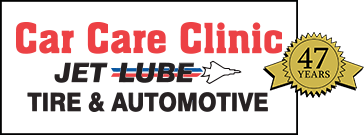Being stranded on the side of the road in the hottest part of the year, is no fun.
Follow these tips to prepare your vehicle for what lies on the road ahead.
- To help avoid over-heating, a car´s cooling system, engine hoses, drive belts and battery should be inspected by a mechanic.
- Motorists should regularly check fluid levels and tire tread depth. To quickly check the tire tread, insert a penny in the tread groove with Lincoln´s head upside down – if you can see the entire head, your tires are worn and should be replaced. Over or under-inflation can weaken your tires, cause uneven tread wear, and impact your gas mileage. Many people think the proper tire pressure can be found on your actual tire, however that’s incorrect. Refer to your vehicle owner’s manual or to a decal often found in the doorjamb or glove compartment, for the proper tire pressure. Check the pressure when the tire is cold / at air temperature. Do not check the pressure after an extended drive on the highway or after driving for more than five minutes. Hot weather can cause air pressure inside the tire to expand, causing a blowout if the tire is in poor condition.
- Motorists should use extra caution while driving during a rainstorm, particularly after an extended period without rain, since extreme heat causes oils deposited from vehicles to be absorbed into the road and slick spots can result during rainstorms.
- Motorists should enhance their hot-weather preparedness with an emergency kit that should be stocked with things that would be needed in the event of a breakdown, such as water, necessary medications, first aid supplies and portable cooling devices, such as battery-powered fans. Emergency kits should include: jumper cables, a flashlight, fresh batteries, flares, basic tools, duct tape, gloves, flares, bottled water, granola bars and a mobile phone with charger.
- Never leave children or pets unattended in a vehicle, which can heat up quickly during hot weather.
- When traveling a long distance, try to plan your trip for early in the day or later in the evening when the weather is cooler.
- Consistently check the levels of all the car’s vital fluids — including motor oil, radiator fluid, transmission fluid, and windshield wiper fluid — and top-off or change them as needed. Pay special attention to the oil since it keeps the moving parts in your engine from grinding against each other. Make sure to change it regularly. Check your vehicle owner’s manual for the appropriate interval for your vehicle.
- Keep a gallon of distilled water in the trunk of your vehicle. If your vehicle starts to overheat, pour the water into the radiator to temporarily cool it down until you can get to a service station. But don’t open the radiator cap until the vehicle has cooled down. Hot fluid could spill out and cause serious burns.
- Over time, dirt, bugs, leaves, and other debris can collect in front of your vehicle’s radiator and interfere with the cooling system. Spray the radiator grill with a hose when you wash your vehicle to remove debris and allow air to flow freely through to your air conditioner.
- Match the load rate of your vehicle (found in the owner’s manual or inside the driver’s side door) with the estimated weight of your family and the luggage you’ll be packing for the trip. Excess weight makes the engine work harder and consume more gasoline.
- Make sure your headlights, taillights, turn signals, parking lights, and license plate lights are all working. Replace any that may have burned out. Make sure wiper blades are in good condition in case you run into any unexpected storms. Visually inspect your vehicle’s belts, tubes, and hoses. Replace any that are cracked or leaking.
- Some state laws require headlights to be turned on any time the wipers are in use due to rain, fog or other conditions.
- Remember to always buckle up and never drink and drive.


